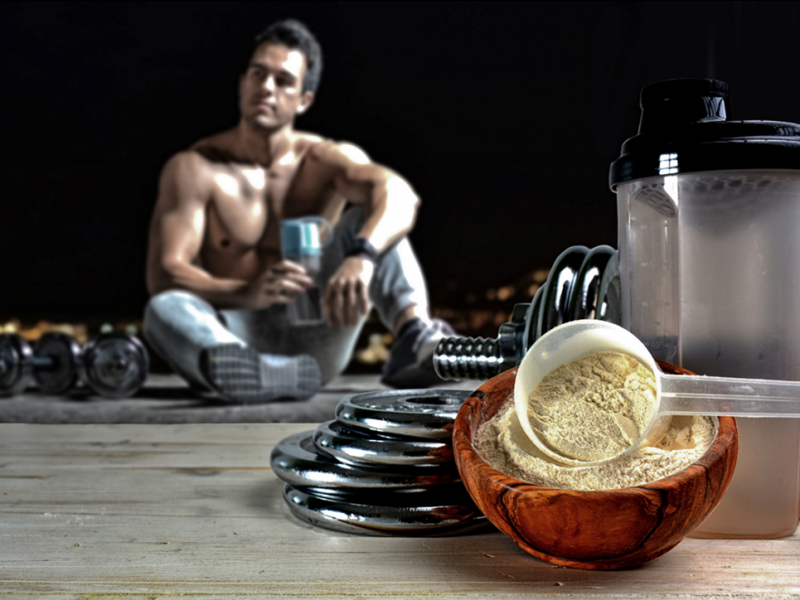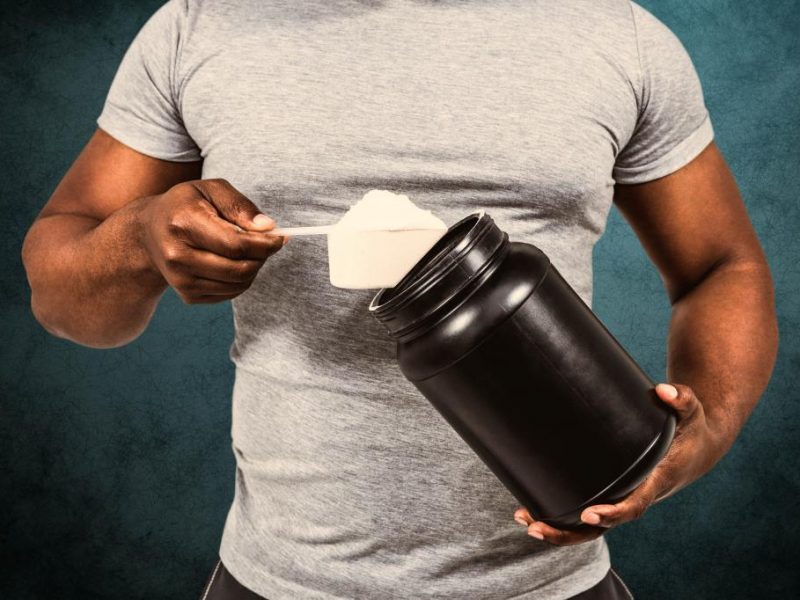With the support of Roberto Castellano, Helena Om and Sergio Molina we have developed some concepts so that you can learn to develop effective training .
Before talking about what to do to develop effective workouts and knowing how to regulate intensity or volume, we will talk about some concepts and discussions about these important variables, which are relevant for you to learn to train.
Intensity or Volume: which builds muscles?
So what is the main factor that helps build muscle ?; well, the intensity, but this is a personal factor, which is subjective.
Only you can feel how hard you are working; no one else in the gym can get into your head and body and experience what you are experiencing.
Is reducing repetitions and accumulating weight from one workout to another the way to increase intensity? “Sure.”
But after a while, you’re going to hit a wall in your ability to increase both your strength and muscle mass, and do it without breaking your joints.
Better to have a few tricks up your sleeve;
Some other techniques to increase intensity are not so glamorous, but they do make for effective workouts and honestly, they will seriously challenge you if you work on them! hard!
Before discussing these techniques, we analyze a specific topic, which is on everyone’s mind and, although it should not be a controversial topic, it still is.
Intensity or Volume: why does the myth persist?
The myth that lifting heavy weights is the only factor in building muscle has been perpetuated for decades among bodybuilders.
However, the key to increasing muscle hypertrophy is to increase intensity, in addition to other physiological factors that may play a role.
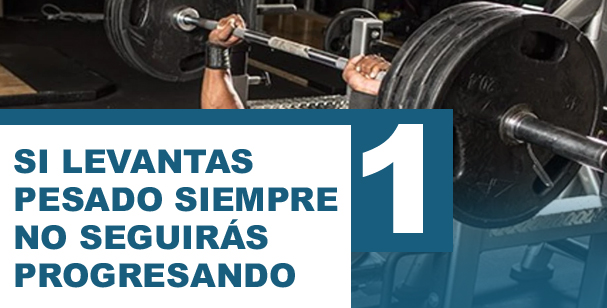
Sure, lifting increasingly heavy weights over time is itself a way to increase intensity.
- The downside is that lifting a heavy load for a long time can cause pain and injury to the muscles, joints and tendons, and eventually lead to exhaustion or overtraining.
- When intensity techniques are used to reach effective workouts , less weight can be used and thus there is less wear and tear, also provides a rest in the usual way, which increases capacity to develop the mind-muscle connection.
There are several reasons why the “bigger weights = bigger muscles” myth won’t die.
- The first and most obvious reason is that when people start training, their bodies respond quickly by increasing muscle.
- Without much knowledge of how hypertrophy works, it stands to reason that beginners think they should keep putting on weight … until they get injured or hit a plateau …
Also, you see bodybuilders at the gym and on social media lifting super heavy weights and imagine, “Hey, this guy’s chest is so big because he’s doing 10 reps at 315, I need to do that too! ”.
What’s more, comparing yourself to a professional IFBB bodybuilder is a bad idea because on the one hand they have worked for years to get where they are and on the other hand, they have a different protocol, both in volume or intensity, which makes them have efficient workouts.
Intensity or Volume: what about the technique?
One of the most obvious problems that we have found and that is observed in a gym environment, is the lack of proper form and use of weight when executing the exercises.
As we talked about before, beginners are so consumed with lifting heavy weights, thinking that their physique will improve along with the execution of heavy weights, leaving aside the technique or form of execution of the exercises.
This can not only be very harmful, not only can it inhibit muscle gains, but it will also be a complete waste of time, in addition to risking one’s physique and, with it, tending to lead to possible frustration.
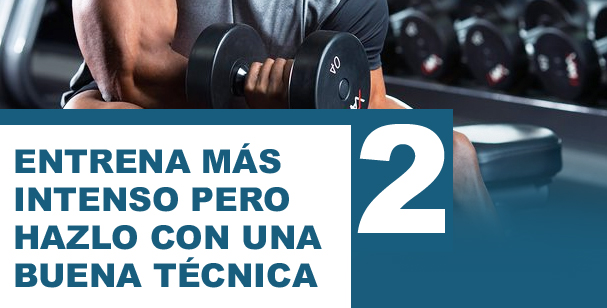
There are, however, some tips that you should take into account in order to develop effective workouts and that have to do with technique, which in the end will allow you to progress, either in volume or intensity. .
- Leave your ego at the gym entrance: the purpose of going to the gym can vary, whether it is to improve your physique or to relieve some stress, no matter, you are there to take care of the most important person: YOU …
- Go Slow – One of the biggest pitfalls that contribute to poor technique is executing the exercises too fast. In many ways, this is not only very dangerous because of the risk of injury, but it also prevents you from gaining muscle gains.
- Reduce weight: Another factor that contributes to excessive pushing and poor technique is the use of excess weight. Exercises performed with a lot of weight and in good shape will definitely improve your muscles, but an excessive weight done can have adverse consequences.
All this results in performing the repetitions correctly, to achieve a certain “look”, however this also depends on the individual capacity.
Intensity or Volume: depends on your capacity
Perhaps also another of the biggest problems with bodybuilding, especially with beginners and intermediates, is using too advanced workouts.
- For example, the young aspiring bodybuilder reads an article written by his favorite professional bodybuilder about how he trains for success.
- The youngster assumes that if they also follow the same regimen, they will get the same results.
If that were true, then this whole world would be full of bodybuilders with gigantic arms and the competitions would be brutal.
The truth about this is that professional bodybuilders handle many variables, including their genetics, abilities, etc.
In contrast, amateurs focus on diet, training, rest or aids in a certain context, but they do not live exclusively to compete.
To make it easy; When we talk about volume or intensity of a training program, in all cases they must be adapted to your abilities and you cannot take it as an absolute solution.
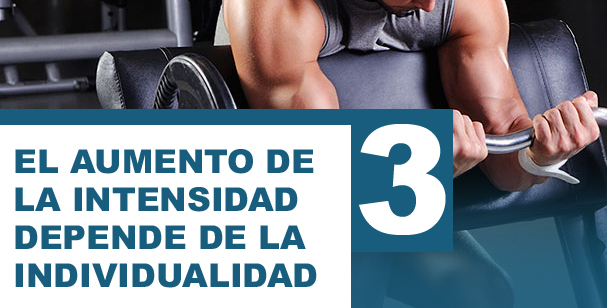
Actually, it will have the opposite effect; Using an advanced bodybuilding program will lead to overtraining and eventually disappointment.
Therefore, your effective workouts should be those where the capacity of your body is aligned to what you can do and not to the goals you envision.
Friedrich Wilhelm Nietzsche, a well-known philosopher, concluded it in one sentence: “one must learn to walk before one can run”… well, bodybuilding or muscle development is the same …
This could be translated into the opinion of our invited athletes in this video, Roberto Castellano, Helena Om and Sergio Molina, who talk about how an athlete should approach their training.
Everyone’s physiological response to a weight is what counts and not the weight that is moved.
Intensity: how to increase it?
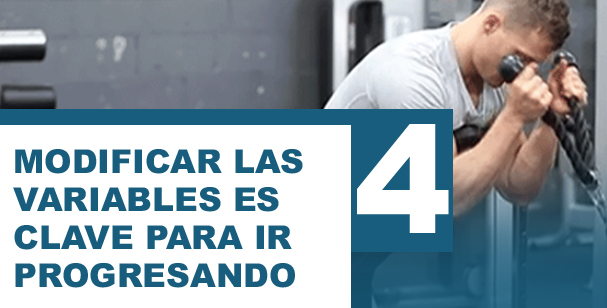
Obviously one way to increase intensity is to increase weight, however there are some things you can do to have effective workouts :
- Shorten your rest between sets – This is one of the easiest ways to increase intensity. Shortening your breaks means that you will probably have to lose the weight you lift.
- Modify the time under tension: you can also change the speed of your repetitions; According to the exercise, you can play with the eccentric, concentric phases or in the middle of a repetition … an example way is to do a series of 12 reps and from the 8-9th repetition reduce the cadence, which in the end will impact with a great intensity on your target muscles …
- Fatigue your muscles before your central nervous system: this will make your muscles burn a bit before you start. For example, if you’re doing a bench press, you can start with some light dumbbell sets to warm up your chest.
- Do drop-sets: This technique will work both fast-twitch and slow-twitch fibers, pushing a lot of blood into the muscle, doing enough damage to force your body to respond by growing.
- Do giant sets – it’s just three or more exercises in a row, with little or no rest in between; If compound exercises are used, it will have a high impact on the muscles, especially the back muscles and especially the leg muscles that generally benefit from this brutality.
- Do forced reps: when you hit failure in a set you have a few options; you can stop, of course. But if you use force reps you could push your limits and increase the intensity.
- Develop super sets: especially in isolation movements, this type of variation will help you accentuate the moment of reaching muscle failure and burn even more muscle tissue.
The theory of effective training
The main current theories about muscle growth point to “time under tension” as a means for growth.
While this factor is widely considered the best for effective workouts due to the research behind it, the most effective training method for achieving hypertrophy is still debated.
There are many who believe in high intensity techniques – low volume, heavy weight training as a means of illicit muscle growth. While many others believe that weight must be sacrificed to incorporate high-volume training.
Some of the better known advocates on both sides are genetically superior professional bodybuilders and their physique / progress alone is not enough evidence to settle the score.
To do this, we must analyze the advantages of both styles and draw the appropriate conclusions from the research on what actually leads to growth.
The high volume with low intensity
High volume, low intensity training is the most traditional form of training and widely accepted by bodybuilders.
- The idea is to incorporate multiple sets to repeatedly target a specific muscle group in an attempt to break down muscle tissue and increase tension time as a means of illicit growth.
- Some of the most in-depth evidence of volume use points to its ability to increase protein synthesis markers after exercise, which is a very important indicator for muscle growth (1).
Despite the research that indicates that this is how you have effective training , you must understand the limitations of sticking to a single training style.
The first is the research that shows its correlation with protein synthesis, there were no obvious problems with the study itself.
It is, that most take a study hypothesizing that high volume is the correct training style without taking into account the others.
Protein synthesis is:
- The generation of proteins by cells using DNA, RNA and various enzymes or,
- The process by which amino acids are arranged linearly into proteins through the participation of ribosomal RNA, transfer RNA, messenger RNA, and various enzymes
In both definitions, it is the process by which the body repairs muscle tissue damaged by exercise and, while it is involved in muscle growth, IT IS NOT AN EXCLUSIVE INDICATOR THAT YOU ARE BUILDING MUSCLE.
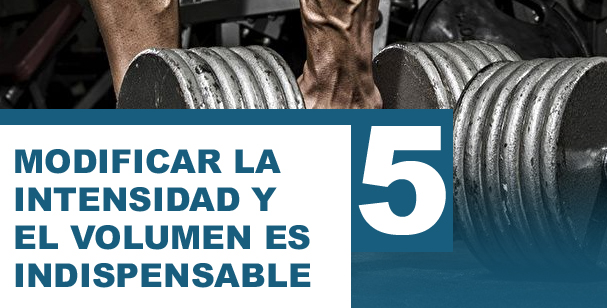
The low volume with high intensity
Now let’s move on to high intensity training; Some of the key principles behind high intensity training are based on the fact that it can induce muscle damage and failure in fewer sets than you think and you can only grow when you are recovering.
One of the key principles of this style of training is to make every second in the gym count so you can spend more time growing.
Although this is a novel idea to have effective workouts , some of its biggest critics discuss whether or not it is possible to maximize the tension time with so few series and with more fatigue due to the perceived load the weight you are lifting.
Now then; High-volume training is notorious for leading to over-training of the musculoskeletal system, high-intensity training with heavy loads is notorious for leading to over-training of the central nervous system (2).
Here, if you do a high intensity routine, just because your muscles cannot lift a load, it does not mean that it is the result of muscle damage.
It is entirely possible to reach muscle failure in an exercise, without inducing the time of tension necessary for growth.
Despite these concerns about high intensity training, the fact remains the same, that the best way to induce progress is by increasing the amount of load being used to induce muscle tension.
From this point of view, the only way to do this is to incorporate a heavier lift at some point in the routine to promote progression. High intensity training certainly has the heavier aspect built in.
Effective trainings : which is better?
When we analyze the question, what is the best training style? Why do they have effective training , what do we answer?
As for which method incorporates aspects of both styles, Arthur Jones, the founder of Nautilus in the 1970s, claims to be one of the geniuses of fitness as his form of high intensity training focused on a volume cadence relatively low (3).
His technique caused muscles to fail without over-stimulating the central nervous system or overdoing it with full volume.
Research has never proven or compared effective workouts and which is best for athletes and bodybuilders.
This analysis occurs due to the lack of principles of periodization (progressive cycles of training and overload) that are basic.
The best possible end result is to use periodization techniques, taking into account individuality by combining:
- Low intensity and low volume.
- High intensity and low volume.
- High intensity and high volume.
- HIIT: interval intensity.
What is the best training system? This is answered by Raúl Carrasco and Roberto Castellano in a compendium of criteria that will make you better understand how to develop effective training.

